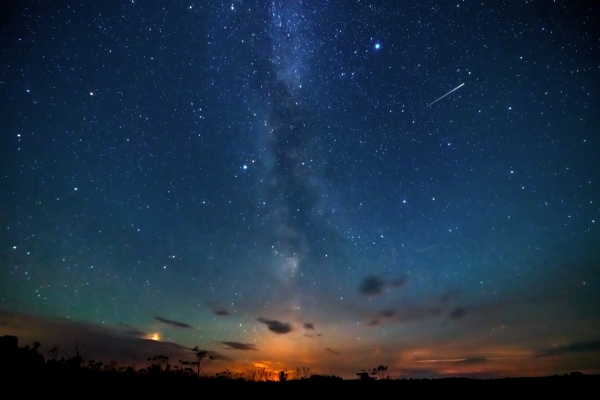Get ready to see rare spectacular event in sky! Parade of planets to begin tonight
While all five planets continue to roam around each other in the final days of March, you will be able to see them the clearest on March 28. Just after sunset, the five planets will come together in rare alignment. However, they will not be aligned in a straight line.
Total Views |
Days after the Moon and Venus came together in a rare conjunction forming what appeared like an inverted chandrabindoo, four other planets are set to cross paths in the skies above Earth.
Mercury, Jupiter, Venus, Uranus, and Mars will line up with the Moon in the skies in one of the most awaited celestial dance as seen from Earth. The Moon will join these planets in the skies as it continues to move away from Venus after the dazzling display that was seen across the world just a few days ago.

While the five planets will be best seen on March 28, stargazers will be able to see one more planet in the skies today as Saturn appears in the afternoon. However, a binocular will be required for that.
While all five planets continue to roam around each other in the final days of March, you will be able to see them the clearest on March 28. Just after sunset, the five planets will come together in rare alignment. However, they will not be aligned in a straight line.
The planets will line up from the horizon beginning with Jupiter, which could be seen around 7:30 pm in the evening sky, just after sunset. This will be followed by Venus, Uranus, Moon, and Mars going upwards.
According to astronomers, the planets will stretch from the horizon line to around halfway up the night sky. But don’t be late: Mercury and Jupiter will quickly dip below the horizon around half an hour after sunset. The five-planet spread can be seen from anywhere on Earth, as long as you have clear skies and a view of the west.
The crescent moon and Venus are pictured in Bangkok on March 24, 2023, following a lunar occultation of the second planet from the sun.
While Jupiter, Venus, and Mars could be seen by the naked eye due to their higher brightness, however, Mercury and Uranus could be trickier to spot, since they will be dimmer. You might need binoculars to see the two planets in the evening sky.
Venus will be one of the brightest things in the sky, and Mars will be hanging out near the moon with a reddish glow. Uranus could be seen with a greenish glow just above Venus.
While the planets will appear lined up in the sky, it does not mean they are actually closer to each other. This kind of alignment happens when the planets’ orbits line them up on one side of the sun from Earth’s perspective, Cooke said.
.
.

